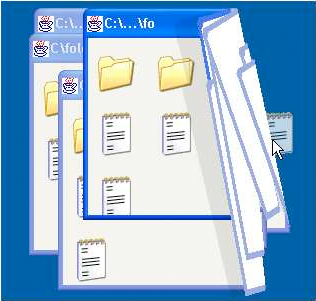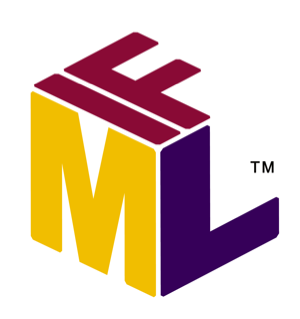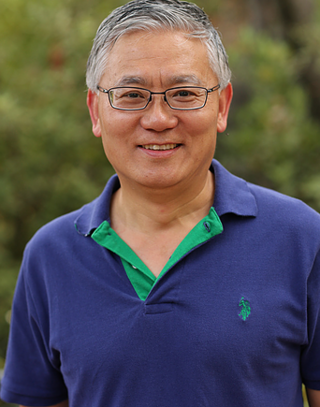Related Research Articles

The unified modeling language (UML) is a general-purpose visual modeling language that is intended to provide a standard way to visualize the design of a system.
Task analysis is a fundamental tool of human factors engineering. It entails analyzing how a task is accomplished, including a detailed description of both manual and mental activities, task and element durations, task frequency, task allocation, task complexity, environmental conditions, necessary clothing and equipment, and any other unique factors involved in or required for one or more people to perform a given task.
In the context of human–computer interaction, a modality is the classification of a single independent channel of input/output between a computer and a human. Such channels may differ based on sensory nature, or other significant differences in processing . A system is designated unimodal if it has only one modality implemented, and multimodal if it has more than one. When multiple modalities are available for some tasks or aspects of a task, the system is said to have overlapping modalities. If multiple modalities are available for a task, the system is said to have redundant modalities. Multiple modalities can be used in combination to provide complementary methods that may be redundant but convey information more effectively. Modalities can be generally defined in two forms: human-computer and computer-human modalities.

A tangible user interface (TUI) is a user interface in which a person interacts with digital information through the physical environment. The initial name was Graspable User Interface, which is no longer used. The purpose of TUI development is to empower collaboration, learning, and design by giving physical forms to digital information, thus taking advantage of the human ability to grasp and manipulate physical objects and materials.

User interface (UI) design or user interface engineering is the design of user interfaces for machines and software, such as computers, home appliances, mobile devices, and other electronic devices, with the focus on maximizing usability and the user experience. In computer or software design, user interface (UI) design primarily focuses on information architecture. It is the process of building interfaces that clearly communicates to the user what's important. UI design refers to graphical user interfaces and other forms of interface design. The goal of user interface design is to make the user's interaction as simple and efficient as possible, in terms of accomplishing user goals.
In artificial intelligence, an embodied agent, also sometimes referred to as an interface agent, is an intelligent agent that interacts with the environment through a physical body within that environment. Agents that are represented graphically with a body, for example a human or a cartoon animal, are also called embodied agents, although they have only virtual, not physical, embodiment. A branch of artificial intelligence focuses on empowering such agents to interact autonomously with human beings and the environment. Mobile robots are one example of physically embodied agents; Ananova and Microsoft Agent are examples of graphically embodied agents. Embodied conversational agents are embodied agents that are capable of engaging in conversation with one another and with humans employing the same verbal and nonverbal means that humans do.
User interface modeling is a development technique used by computer application programmers. Today's user interfaces (UIs) are complex software components, which play an essential role in the usability of an application. The development of UIs requires therefore, not only guidelines and best practice reports, but also a development process including the elaboration of visual models and a standardized notation for this visualization.

Presentation–abstraction–control (PAC) is a software architectural pattern. It is an interaction-oriented software architecture, and is somewhat similar to model–view–controller (MVC) in that it separates an interactive system into three types of components responsible for specific aspects of the application's functionality. The abstraction component retrieves and processes the data, the presentation component formats the visual and audio presentation of data, and the control component handles things such as the flow of control and communication between the other two components.
End-user development (EUD) or end-user programming (EUP) refers to activities and tools that allow end-users – people who are not professional software developers – to program computers. People who are not professional developers can use EUD tools to create or modify software artifacts and complex data objects without significant knowledge of a programming language. In 2005 it was estimated that by 2012 there would be more than 55 million end-user developers in the United States, compared with fewer than 3 million professional programmers. Various EUD approaches exist, and it is an active research topic within the field of computer science and human-computer interaction. Examples include natural language programming, spreadsheets, scripting languages, visual programming, trigger-action programming and programming by example.
Fabio Paternò is Research Director and Head of the Laboratory on Human Interfaces in Information Systems at Istituto di Scienza e Tecnologie dell'Informazione, Consiglio Nazionale delle Ricerche in Pisa, Italy.

An interaction technique, user interface technique or input technique is a combination of hardware and software elements that provides a way for computer users to accomplish a single task. For example, one can go back to the previously visited page on a Web browser by either clicking a button, pressing a key, performing a mouse gesture or uttering a speech command. It is a widely used term in human-computer interaction. In particular, the term "new interaction technique" is frequently used to introduce a novel user interface design idea.
The task-focused interface is a type of user interface which extends the desktop metaphor of the graphical user interface to make tasks, not files and folders, the primary unit of interaction. Instead of showing entire hierarchies of information, such as a tree of documents, a task-focused interface shows the subset of the tree that is relevant to the task-at-hand. This addresses the problem of information overload when dealing with large hierarchies, such as those in software systems or large sets of documents. The task-focused interface is composed of a mechanism which allows the user to specify the task being worked on and to switch between active tasks, a model of the task context such as a degree-of-interest (DOI) ranking, a focusing mechanism to filter or highlight the relevant documents. The task-focused interface has been validated with statistically significant increases to knowledge worker productivity. It has been broadly adopted by programmers and is a key part of the Eclipse integrated development environment. The technology is also referred to as the "task context" model and the "task-focused programming" paradigm.

Human–computer interaction (HCI) is research in the design and the use of computer technology, which focuses on the interfaces between people (users) and computers. HCI researchers observe the ways humans interact with computers and design technologies that allow humans to interact with computers in novel ways. A device that allows interaction between human being and a computer is known as a "Human-computer Interface (HCI)".
Digital Live Art is the intersection of Live Art, Computing and Human Computer Interaction (HCI). It is used to describe live performance which is computer mediated - an orchestrated, temporal witnessed event occurring for any length of time and in any place using technological means. Digital Live Art borrows the methods, tools and theories from HCI to help inform and analyze the design and evaluation of Digital Live Art experiences.

Marilyn Mantei Tremaine is an American computer scientist. She is an expert in human–computer interaction and considered a pioneer of the field.
MARIA is a universal, declarative, multiple abstraction level, XML-based user interface markup language for modelling interactive applications in ubiquitous environments.

The Interaction Flow Modeling Language (IFML) is a standardized modeling language in the field of software engineering. IFML includes a set of graphic notations to create visual models of user interactions and front-end behavior in software systems.
Joëlle Coutaz is a French computer scientist, specializing in human-computer interaction (HCI). Her career includes research in the fields of operating systems and HCI, as well as being a professor at the University of Grenoble. Coutaz is considered a pioneer in HCI in France, and in 2007, she was awarded membership to SIGCHI. She was also involved in organizing CHI conferences and was a member on the editorial board of ACM Transactions on Computer-Human Interaction.

Shumin Zhai is a Chinese-born American Canadian Human–computer interaction (HCI) research scientist and inventor. He is known for his research specifically on input devices and interaction methods, swipe-gesture-based touchscreen keyboards, eye-tracking interfaces, and models of human performance in human-computer interaction. His studies have contributed to both foundational models and understandings of HCI and practical user interface designs and flagship products. He previously worked at IBM where he invented the ShapeWriter text entry method for smartphones, which is a predecessor to the modern Swype keyboard. Dr. Zhai's publications have won the ACM UIST Lasting Impact Award and the IEEE Computer Society Best Paper Award, among others, and he is most known for his research specifically on input devices and interaction methods, swipe-gesture-based touchscreen keyboards, eye-tracking interfaces, and models of human performance in human-computer interaction. Dr. Zhai is currently a Principal Scientist at Google where he leads and directs research, design, and development of human-device input methods and haptics systems.
Wisdom is a software development process and method to design software-intensive interactive systems. It is based on object modelling, and focuses human-computer interaction (HCI) in order to model the software architecture of the system i.e. it is architecture-centric. The focus on HCI while being architecture-centric places Wisdom as a pioneer method within human-centered software engineering. Wisdom was conceived by Nuno Nunes and first published in the years 1999-2000 in order to close the gaps of existing software engineering methods regarding the user interface design.
References
- ↑ Paternò, Fabio (2003). "ConcurTaskTrees: An Engineered Notation for Task Models" (PDF). The Handbook of Task Analysis for Human-Computer Interaction: 483–503.
- ↑ Paternò, Fabio; Santoro Carmen; Spano Lucio Davide (October 2011). "Engineering the authoring of usable service front ends" (PDF). Journal of Systems and Software. 84 (10): 1806–1822. CiteSeerX 10.1.1.304.366 . doi:10.1016/j.jss.2011.05.025.
- ↑ Manca, Marco; Paternò Fabio; Santoro Carmen; Spano Lucio Davide. "Considering task pre-conditions in model-based user interface design and generation" (PDF). Proceedings of the 2014 ACM SIGCHI Symposium on Engineering Interactive.
- ↑ Vigo, Markel; Santoro, Carmen; Paterno, Fabio (2017). "The usability of task modeling tools" (PDF). 2017 IEEE Symposium on Visual Languages and Human-Centric Computing (VL/HCC). pp. 95–99. doi:10.1109/VLHCC.2017.8103455. ISBN 978-1-5386-0443-4. S2CID 7374320.
- ↑ Nbrega, Leonel; Nuno Nunes; Helder Coelho (2006). Mapping ConcurTaskTrees into UML 2.0 (PDF). Proceedings of the 12th International Workshop on Interactive Systems Design Specification and Verification. Lecture Notes in Computer Science. Vol. 3941. pp. 237–248. doi:10.1007/11752707_20. ISBN 978-3-540-34145-1.
- ↑ Mori, Giulio; Paternò Fabio; Santoro Carmen (2002). "CTTE: Support for Developing and Analysing Task Models for Interactive System Design" (PDF). IEEE Transactions on Software Engineering. 28 (8): 797–813. CiteSeerX 10.1.1.359.5986 . doi:10.1109/tse.2002.1027801.